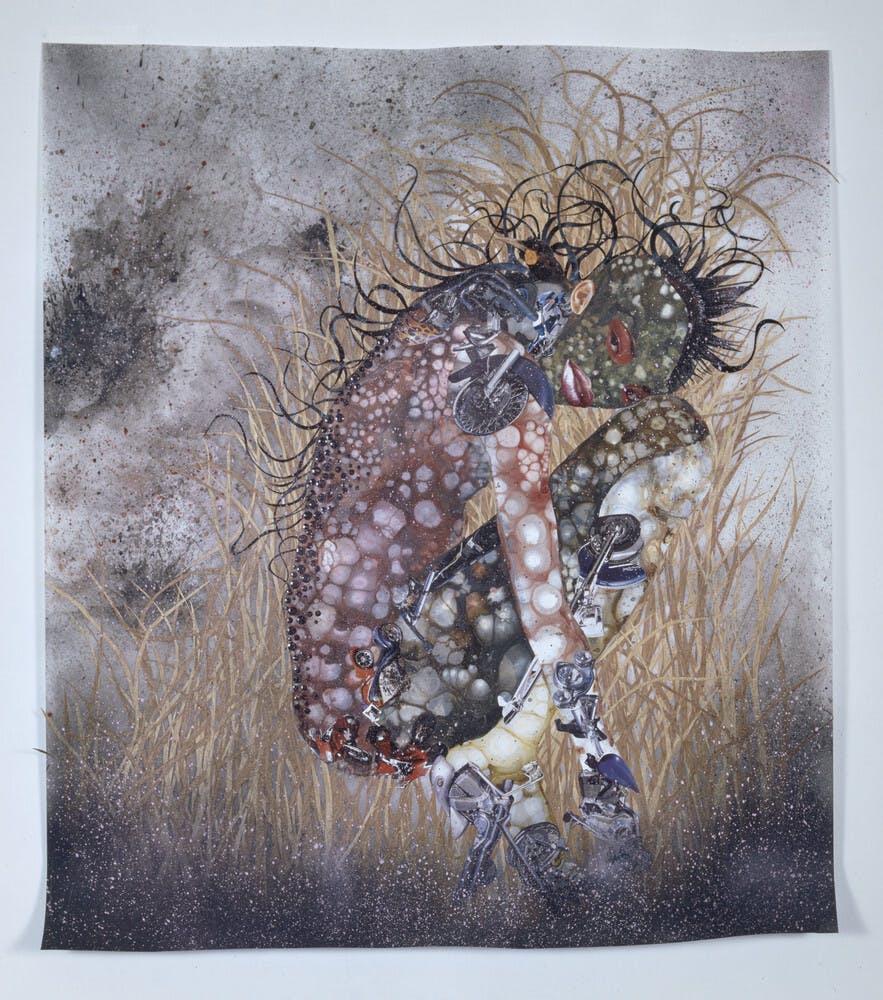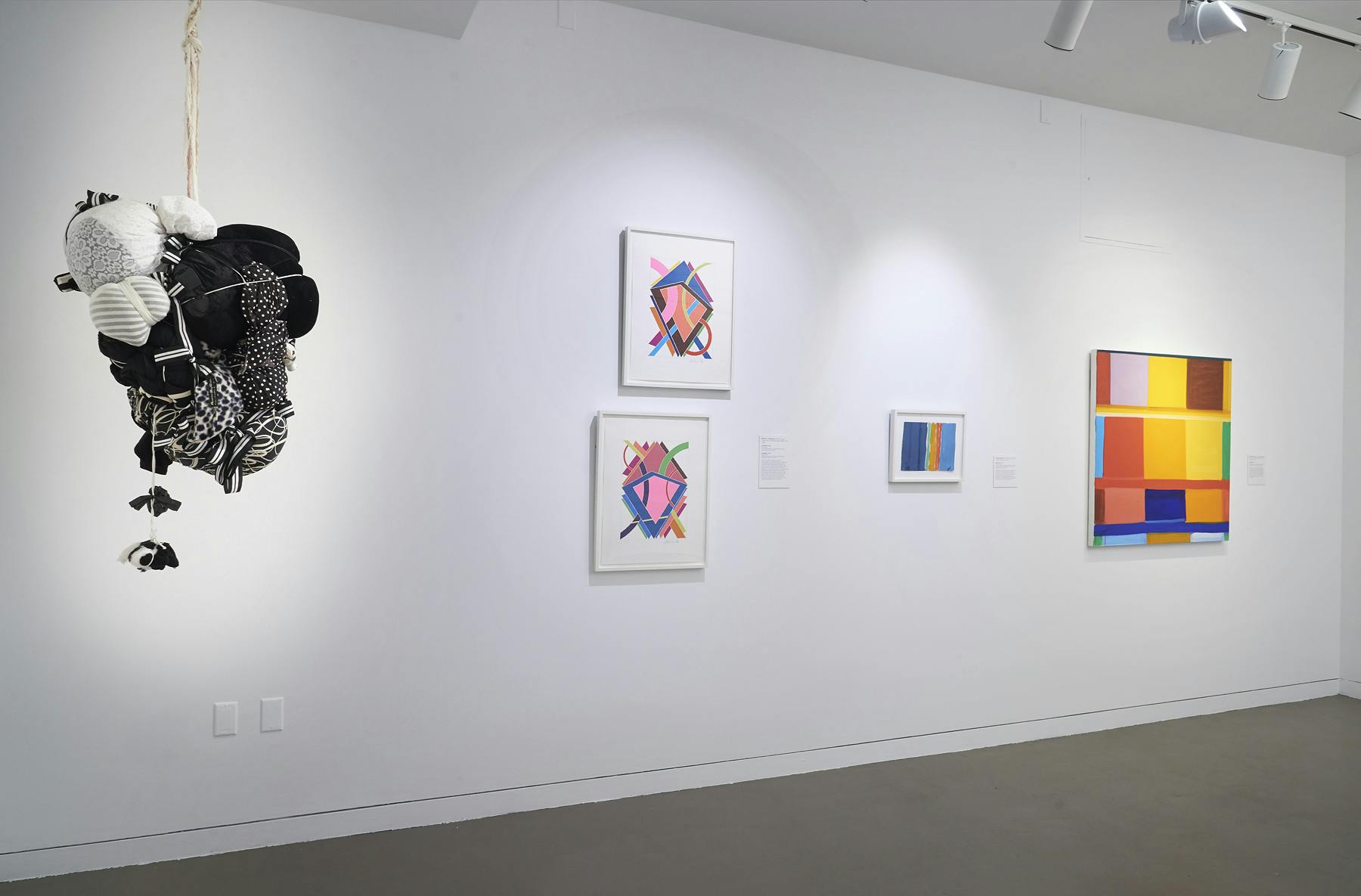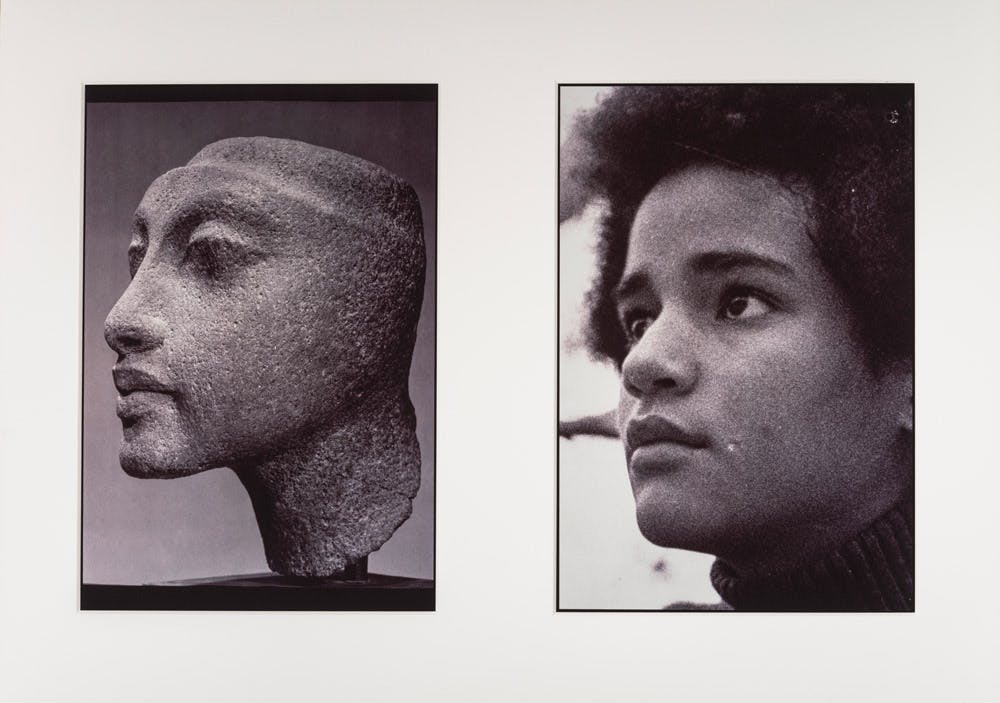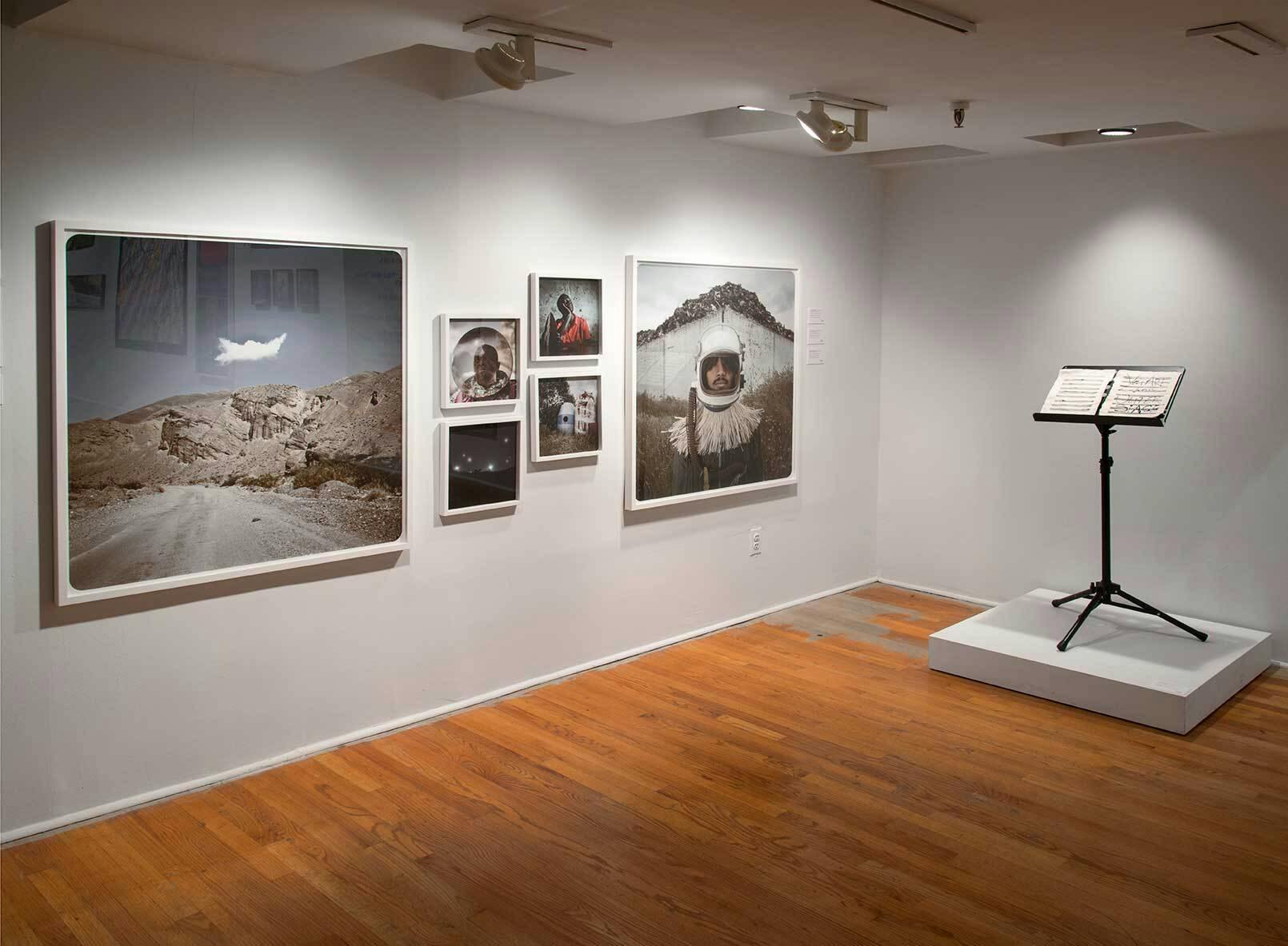Wangechi Mutu
(b. 1972)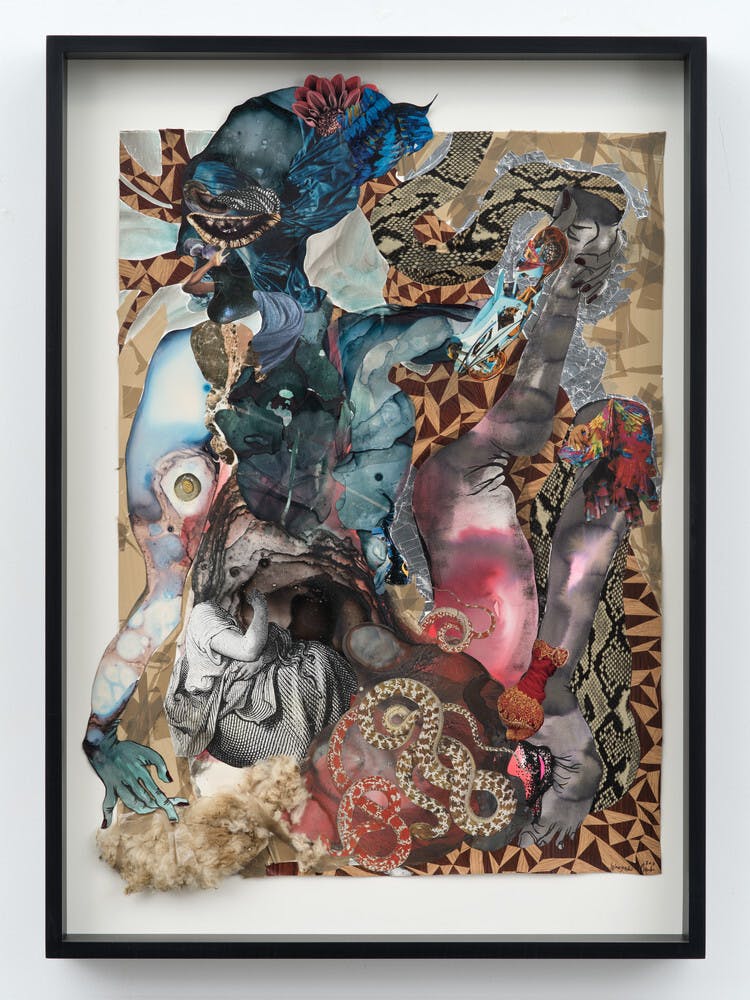
Reshaping narratives of womanhood from the art historical canon, Wangechi Mutu’s constructs science fiction-like figures defined by their agency.
Biography
Combining elements of literature, history, and myth, Wangechi Mutu’s work examines the role of women at the interplay of fact and fiction.
Mutu was born and raised in Kenya. She developed an early interest in art, but her art classes were limited in scope and largely focused on technique, rather than experimentation. At age seventeen, she moved to Wales to attend United World College of the Atlantic. To nurture her artistic inclinations, she then applied to art school in the United States, where she studied at Parsons School of Design and later the Cooper Union. While there, she attended gallery and museum openings, met artists such as Glenn Ligon and Fred Wilson, and engaged in questions of race, gender, and institutional critique. She thought critically about the politicization of Black people in the United States versus in Africa: “There’s something about the body that confines us, that disables us, and that prevents us from being immaterial, being invisible, being all of these things that maybe you want to be, because maybe you don’t want to stand out.”1
As a graduate student at Yale, Mutu worked in sculpture to investigate postcolonialism, pre-colonial aesthetics, and spirituality, while also completing coursework in ethnomusicology and linguistics. After earning her MFA, she moved to New York and four years later became a resident at the Studio Museum in Harlem. Since that time, she has continued her work in sculpture as well as painting, collage, and video. Her hybridized Black women figures—combining humans, plants, animals, and machines—illuminate the effects of systemic oppression on women’s minds and bodies. Sampling from sources such as fashion magazines and medical diagrams, her practice contests traditional depictions of Black women. She instead offers new and powerful possibilities for representation.
Mutu received her BFA from the Cooper Union and MFA from the Yale School of Art. She received numerous awards, including the Joan Mitchell Foundation Painters & Sculptors Award (2007); a United States Artist Grant (2014); and the Cultural Leadership Award from the American Federation for the Arts (2016). The Studio Museum presented her work in exhibitions such as African Queen (2005); The Bearden Project (2011); and Regarding the Figure (2017).
Exhibitions and Events
Wangechi Mutu
(b. 1972)
Reshaping narratives of womanhood from the art historical canon, Wangechi Mutu’s constructs science fiction-like figures defined by their agency.
The Mother of all Snake Dreams, 2011
Biography
Combining elements of literature, history, and myth, Wangechi Mutu’s work examines the role of women at the interplay of fact and fiction.
Mutu was born and raised in Kenya. She developed an early interest in art, but her art classes were limited in scope and largely focused on technique, rather than experimentation. At age seventeen, she moved to Wales to attend United World College of the Atlantic. To nurture her artistic inclinations, she then applied to art school in the United States, where she studied at Parsons School of Design and later the Cooper Union. While there, she attended gallery and museum openings, met artists such as Glenn Ligon and Fred Wilson, and engaged in questions of race, gender, and institutional critique. She thought critically about the politicization of Black people in the United States versus in Africa: “There’s something about the body that confines us, that disables us, and that prevents us from being immaterial, being invisible, being all of these things that maybe you want to be, because maybe you don’t want to stand out.”1
As a graduate student at Yale, Mutu worked in sculpture to investigate postcolonialism, pre-colonial aesthetics, and spirituality, while also completing coursework in ethnomusicology and linguistics. After earning her MFA, she moved to New York and four years later became a resident at the Studio Museum in Harlem. Since that time, she has continued her work in sculpture as well as painting, collage, and video. Her hybridized Black women figures—combining humans, plants, animals, and machines—illuminate the effects of systemic oppression on women’s minds and bodies. Sampling from sources such as fashion magazines and medical diagrams, her practice contests traditional depictions of Black women. She instead offers new and powerful possibilities for representation.
Mutu received her BFA from the Cooper Union and MFA from the Yale School of Art. She received numerous awards, including the Joan Mitchell Foundation Painters & Sculptors Award (2007); a United States Artist Grant (2014); and the Cultural Leadership Award from the American Federation for the Arts (2016). The Studio Museum presented her work in exhibitions such as African Queen (2005); The Bearden Project (2011); and Regarding the Figure (2017).


